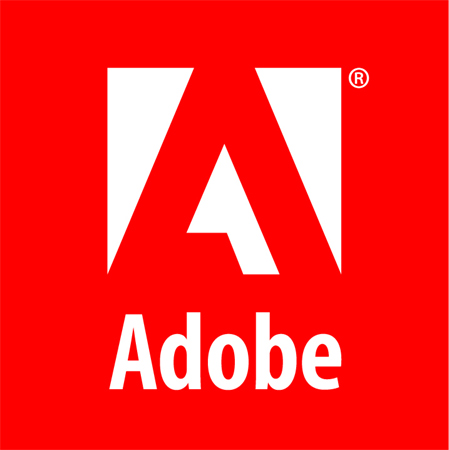
Adobe Content Authenticity, now in public beta, helps creators secure attribution
Creators have always deserved proper attribution for the powerful digital work they create. Their creations shape culture, drive engagement and fuel industries. But in today’s rapidly evolving digital landscape, especially with the rise of generative AI, creators need a modern solution that’s tailored to the realities of this digital ecosystem. They need a tool that secures attribution, while supporting greater transparency, accountability and protection.
At MAX London, Adobe launched the public beta of Adobe Content Authenticity, a free app that allows creators to easily apply Content Credentials to their digital work. Content Credentials are a secure type of metadata that allows creators to share information about themselves and their work — effectively signing their work digitally, much like an artist signing a painting or sculpture. By adopting Content Credentials today, creators are helping build a more transparent, accountable, and creator-friendly digital ecosystem.
Identity verification for the creative community
One thing we’ve heard consistently in our conversations with creators is that they struggle to secure proper attribution for their work online. The concerns highlight a critical gap: Creators need a reliable way to verify their identities and receive credit for what they produce. Without this, creators risk losing control of their work, missing future opportunities or, worse, watching others use or profit from their work without their consent. To address this, we’re excited to collaborate with LinkedIn to integrate its new Verified on LinkedIn feature into the Content Authenticity app (as well as the Behance platform), giving creators a way to attach their verified identity to their work. As an extension of this collaboration, LinkedIn has joined the Adobe-led Content Authenticity Initiative as a member, joining over 4,500 members committed to driving the widespread adoption of Content Credentials.
Key features, shaped by creators
We initially introduced the Adobe Content Authenticity app as a private beta at MAX last year and have continued to partner closely with our creative community, asking creators to explore the app, test its features and provide valuable feedback. This collaborative approach was central to shaping a tool built by creators, for creators.
Adobe’s Content Credentials are durable, which means they remain securely connected throughout the content lifecycle, even if a screenshot is taken. Here are the key features creators can find with the Content Authenticity app public beta:
Attach verified identity and more: Creators can choose what attribution information gets attached to their digital work with Content Credentials — including their verified name (powered by Verified on LinkedIn) and links to social media accounts (Behance, Instagram, LinkedIn and X). Attaching this information helps creators receive proper attribution for their work and build connections with those who engage with their work online.
Batch-apply Content Credentials to images: Creators can now apply Content Credentials to up to 50 JPG or PNG files at once — whether the content was made with Adobe apps or not. It’s a fast, intuitive way to add Content Credentials to both new and legacy content. Support for larger files and more media types, including video and audio, is coming soon.
Signal preference around generative AI training and usage: With our Firefly family of models, we’ve taken the most creator-friendly approach to AI, training only on content we have permission to use. However, not all generative AI models follow this same approach and we believe there’s more the industry can do to support and protect creators. With the Generative AI Training and Usage Preference, creators can use Content Credentials to signal to other generative AI models that they don’t want their content used for training — helping to lay the foundation for creator choice. Thanks to the durability of Adobe’s Content Credentials, creators who note their training preference today via the app are well-positioned to have it recognized when global opt-out regulations take shape and as more companies start respecting creator preferences. Adobe is working closely with policymakers and industry partners to establish effective, creator-friendly opt-out mechanisms powered by Content Credentials.
Viewing Content Credentials: Creators and consumers can use the Content Authenticity extension for Google Chrome and the Inspect tool within the app to help display and recover any Content Credentials associated with the content, including edit history when available.
Members of the creator community shared their experiences using the app so far:
“The Adobe Content Authenticity app is a game changer towards a more creator-friendly internet — giving artists peace of mind by enabling us to attach important information about ourselves via Content Credentials, ensuring my photos have secure attribution, wherever they travel online.” Said Obi Nzeribe, fashion and commercial photographer.
“This isn’t just about protecting art — it’s about protecting our shared reality. Invisible watermarks combined with secure metadata, unseen by the eye yet unmistakable to technology, are critical tools for preserving truth in an era of digital uncertainty.” Said Benjamin Von Wong, artist and activist.
Looking ahead
Our plan is to integrate the Content Authenticity app with Creative Cloud apps that support Content Credentials like Photoshop, Adobe Lightroom and more, ultimately making it the centralized hub for creators managing their Content Credentials preferences across Adobe apps.
In the coming months, LinkedIn also plans to expand its support for Content Credentials by displaying the attribution information attached with the Content Authenticity app directly on its platform (see mock up above). This will effectively connect ‘trust signals’ across platforms, meaning if a photographer uploads a photo to the Content Authenticity app and signs it with Content Credentials, including their verified identity, LinkedIn will display the credentials via a ‘Cr’ pin when they share it — allowing audiences to scroll over and view the credentials with the creator’s verified name, effectively affirming attribution.
